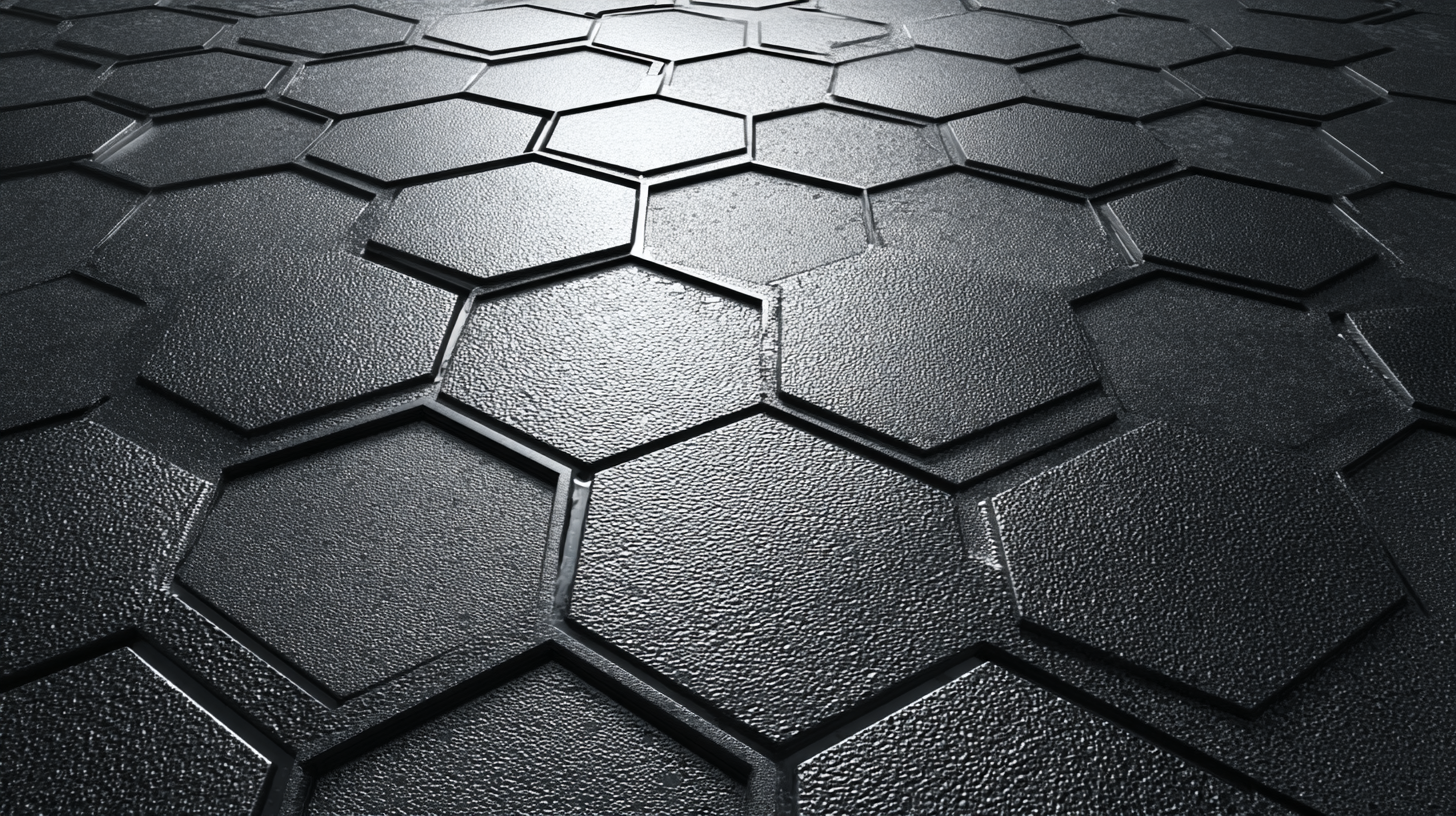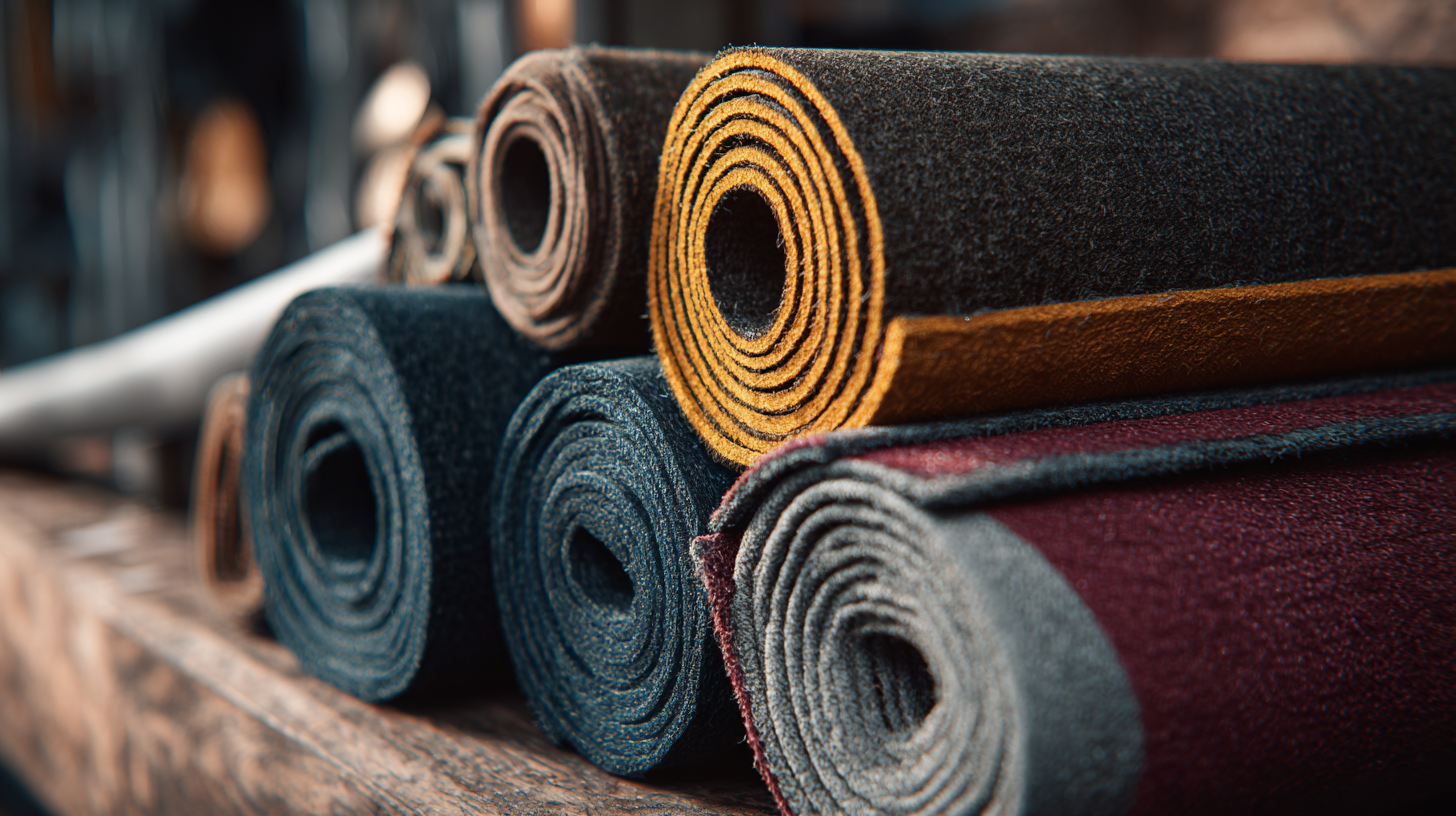2025 Market Insights: The Future Innovations in Best Commercial Mats
As we look ahead to 2025, the commercial mats industry stands on the brink of significant transformation, driven by advancements in technology and a growing emphasis on sustainability. This blog delves into the future innovations shaping the market for commercial mats, exploring how manufacturers are adopting meticulous craftsmanship to enhance product quality and functionality.

With the mantra "精工细造,中国制造,服务世界," we will highlight the unique position of Chinese manufacturers in delivering high-performance mats that cater to global demands. From eco-friendly materials to smart design features, the innovations on the horizon are set to redefine the utility and aesthetics of commercial mats, providing businesses with essential solutions for their flooring needs.
Join us as we uncover the trends and technologies that will shape the landscape of commercial mats in the years to come.
Emerging Trends in Commercial Mats: What to Expect in 2025
As we look towards 2025, the commercial mat industry is poised for significant innovation and transformation. A recent report by Research and Markets projects that the global commercial mat market will reach $1.15 billion by 2025, with a CAGR of 4.9%. This growth is fueled by rising demand for aesthetic, functional, and sustainable products in commercial settings. The traditional mat is evolving, with manufacturers incorporating advanced materials and technologies such as antimicrobial finishes and eco-friendly compositions.
One of the most exciting emerging trends is the integration of smart technology into commercial mats. The 2023 Floor Covering Weekly Industry Report highlights that over 30% of commercial space designers are exploring options for mats that can monitor foot traffic and maintain cleanliness standards in real-time. Furthermore, the emphasis on wellness in workplaces is leading to mats designed not only for safety but also to enhance comfort and promote ergonomic health. The industry's focus on aesthetic versatility means that these mats will increasingly come in a variety of customizable designs, appealing to a broader range of commercial applications, from retail to corporate environments.
Comparative Analysis of Material Innovations for Enhanced Durability
The landscape of commercial mats is evolving rapidly, with innovative materials setting the stage for enhanced durability and performance. A comparative analysis of recent advancements reveals that the integration of advanced composites and sustainable materials is at the forefront of this transformation. According to a study published by the American Society for Testing and Materials, mats made from recycled polymer composites demonstrate a 150% increase in wear resistance compared to traditional materials, significantly extending their lifespan in high-traffic environments.
Moreover, advancements in geopolymer technology are gaining traction for their exceptional moisture buffering capabilities. Research indicates that geopolymer mats can absorb and regulate humidity more effectively than conventional materials, offering a solution for maintaining optimal indoor air quality. With humidity control becoming increasingly vital in commercial spaces, this innovation could redefine standards for mat functionality. As the demand for sustainable and high-performance products continues to rise, the commercial mat industry stands poised for transformative growth driven by these material innovations.
2025 Market Insights: The Future Innovations in Best Commercial Mats - Comparative Analysis of Material Innovations for Enhanced Durability
| Material Type | Durability Rating (years) | Eco-friendliness Rating (1-10) | Cost per Square Foot | Slip Resistance (1-10) |
|---|---|---|---|---|
| Rubber | 10 | 8 | $3.00 | 9 |
| Vinyl | 7 | 6 | $2.50 | 7 |
| Carpet | 5 | 5 | $4.50 | 6 |
| Coconut Fiber | 6 | 9 | $3.50 | 8 |
| Microfiber | 8 | 7 | $3.75 | 9 |
Cost vs. Quality: Evaluating the Best Commercial Mats on the Market
 When evaluating the best commercial mats, a critical consideration arises:
cost versus quality. Investing in high-quality mats can significantly enhance the safety and aesthetics
of any business environment. While cheaper options may be tempting, they often lack durability and effectiveness,
leading to higher costs over time due to frequent replacements and increased maintenance.
When evaluating the best commercial mats, a critical consideration arises:
cost versus quality. Investing in high-quality mats can significantly enhance the safety and aesthetics
of any business environment. While cheaper options may be tempting, they often lack durability and effectiveness,
leading to higher costs over time due to frequent replacements and increased maintenance.
One tip for making the right choice is to assess the specific needs of your business. For high-traffic areas,
opt for mats with robust materials such as rubber or nylon that
can withstand wear and tear. Additionally, consider the mat's purpose—whether it's for safety, anti-fatigue, or
aesthetic appeal. Understanding these factors will help you prioritize quality over mere cost savings.
Another important consideration is the long-term value of your investment. While a lower-priced mat may fit your
initial budget, think about its lifespan and the potential costs associated with its replacement.
High-quality mats often come with warranties that can save you money in
the long run. Evaluate these factors carefully to ensure you strike the right balance between cost
and quality.
Sustainability Metrics: Eco-Friendly Options in Commercial Mat Selection
As we look towards 2025, the emphasis on sustainability in commercial mat selection becomes increasingly vital. Businesses are recognizing the value of eco-friendly options that not only enhance aesthetics but also contribute positively to the environment.
Sustainable mats made from recycled materials or sustainably sourced fibers are gaining popularity, allowing companies to reduce their carbon footprints while maintaining high standards of performance and durability.
Furthermore, sustainability metrics have evolved to provide a clearer understanding of the environmental impact of commercial mats. Manufacturers are now focusing on transparent reporting of their materials' lifecycle, energy consumption during production, and recyclability at the end of their usage. By choosing mats that meet these criteria, businesses can actively participate in the circular economy, promoting a cleaner, healthier planet. The shift towards eco-friendly products is not merely a trend but a necessary step in fostering responsible consumption and production practices in the commercial sector.

User Experience: Choosing the Right Commercial Mat for Different Industries
When selecting the right commercial mat for different industries, understanding user experience is paramount. A commercial mat serves not just a functional role in maintaining cleanliness and safety but also contributes to the overall aesthetic of a business. For example, in the hospitality sector, a plush, welcoming mat can enhance the guest's first impression while providing comfort during long standing periods. Meanwhile, a durable, slip-resistant mat is crucial in environments like kitchens or warehouses, where spills and accidents are common.
Tips for Choosing Commercial Mats:
- Assess the Environment: Different industries have unique requirements. For example, a gym may require mats that provide traction and support, while an office might prioritize aesthetics and ease of cleaning.
- Consider the Foot Traffic: High-traffic areas need mats that can withstand heavy use. Choosing mats made from high-quality materials will ensure longevity and reduce the frequency of replacements.
- Focus on Safety Features: Look for mats that have slip-resistant surfaces or are designed to absorb impact, especially in work environments where employees are on their feet for extended periods. This not only protects your team but also enhances workplace morale.
By focusing on these aspects, businesses can effectively choose commercial mats that enhance user experience and meet specific industry needs.
